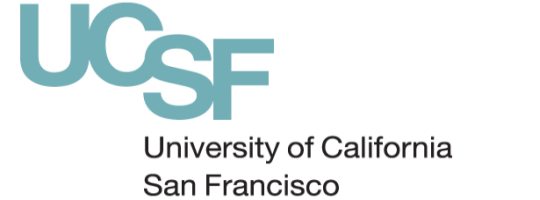Goals for Blood Pressure in Kidney Disease Patients May Be Unrealistic, Suggests Study
Goals for Blood Pressure in Kidney Disease Patients May Be Unrealistic, Suggests Study
One Third of Kidney Patients Have Uncontrolled Hypertension, Study Also Shows
An upward revision of the blood pressure numbers used to identify risk of end-stage renal disease (ESRD) might actually help doctors provide better care for their patients, said the authors of a study in patients with chronic kidney disease (CKD).
The researchers found that systolic blood pressure – the “upper number” in a blood pressure reading – was the key variable. Current guidelines call for CKD patients to maintain a systolic pressure of 130/80 or lower in order to prevent ESRD, which is complete or almost complete kidney failure, leading to dialysis, kidney transplant, or death.
In the study, however, the team determined that systolic pressure had to be 140 or higher in order to be associated with an increased risk of ESRD. A level of 150 or higher was associated with highest risk.
Given that attaining a systolic blood pressure of 130/80 is “very hard to achieve among patients in clinical practice,” it would be worth considering revising the guidelines to make them “a bit more lenient and easier to achieve,” said lead author Carmen A. Peralta, MD, a physician at the San Francisco VA Medical Center (SFVAMC) and an assistant professor of medicine at the University of California, San Francisco (UCSF).
“A revision might allow physicians to not only prescribe fewer blood pressure medications for their patients, but focus more clearly on other aspects of their care, such as blood glucose levels in diabetics,” said Peralta.
The researchers also found, to their surprise, that more than one third of patients in the study had uncontrolled hypertension – defined as a blood pressure of 150/90 or higher – which greatly increases the risk of cardiovascular disease as well as ESRD. The greatest risk factors were being age 60 or older and having high levels of protein in urine.
“The prevalence of hypertension indicates a serious public health concern in the United States,” said Peralta, “and tells us that we need to do a lot more education on the importance of blood pressure control. It also tells us that perhaps our efforts should be focused on reducing blood pressure among people at highest risk, rather than chasing lower numbers in individuals already at 140/90.”
Peralta said that the study, published in the January 9 issue of Archives of General Internal Medicine, is particularly important because it examined the link between blood pressure and risk of ESRD under “real world” conditions in a “contemporary, representative sample” of patients with kidney disease.
She and her fellow researchers studied 16,129 participants in the Kidney Early Evaluation Program (KEEP), a nationwide kidney health screening program offered by the National Kidney Foundation. “The KEEP cohort is a realistic representation of regular people in the United States walking around with CKD,” said Peralta. “In the past, the question of what targets we should establish for preventing ESRD has mostly been studied in randomized control trials, where participants actually tend to be healthier than the general population.”
All study participants had stage 3 CKD, defined as an estimated glomerular filtration rate (eGFR) of lower than 60. GFR is the flow rate of blood filtered by the kidney.
Co-authors of the study are Keith C. Norris, MD, of Charles Drew University of Medicine and Science, Los Angeles, CA; Suying Li, PhD, of Minneapolis Medical Research Foundation, MN; Tara I. Chang, MD and Manjula K. Tamura, MD, of Stanford University School of Medicine; Stacy E. Jolly, MD, of Cleveland Clinic Medicine Institution, OH; George Bakris, MD, of University of Chicago; Peter A. McCullough, MD, of Providence Park Heart Institute, Novi, MI; and Michael Shlipak, MD, of SFVAMC and UCSF.
The study was supported by funds from the National Institute of Diabetes and Digestive and Kidney Diseases, a Robert Wood Johnson Harold Amos award, and the National Institutes of Health. Some of the funds were administered by the Northern California Institute for Research and Education. KEEP is supported by Amgen, Abbot, Novartis, Siemens, Genentech, Genzyme, Nephroceuticals, Pfizer, Lifescan and Suplena.
NCIRE – The Veterans Health Research Institute – is the largest research institute associated with a VA medical center. Its mission is to improve the health and well-being of veterans and the general public by supporting a world-class biomedical research program conducted by the UCSF faculty at SFVAMC.
SFVAMC has the largest medical research program in the national VA system, with more than 200 research scientists, all of whom are faculty members at UCSF.
UCSF is a leading university dedicated to promoting health worldwide through advanced biomedical research, graduate-level education in the life sciences and health professions, and excellence in patient care.
By Steve Tokar
University of California, San Francisco (UCSF)
###
> About University of California, San Francisco (UCSF).
The University of California, San Francisco (UCSF) is a leading university dedicated to promoting health worldwide through advanced biomedical research, graduate-level education in the life sciences and health professions, and excellence in patient care. It is the only UC campus in the 10-campus system dedicated exclusively to the health sciences.
More about University of California, San Francisco (UCSF).
More about University of California, San Francisco (UCSF). Information.
###
* The above story is adapted from materials provided by University of California, San Francisco (UCSF)
________________________________________________________________





















